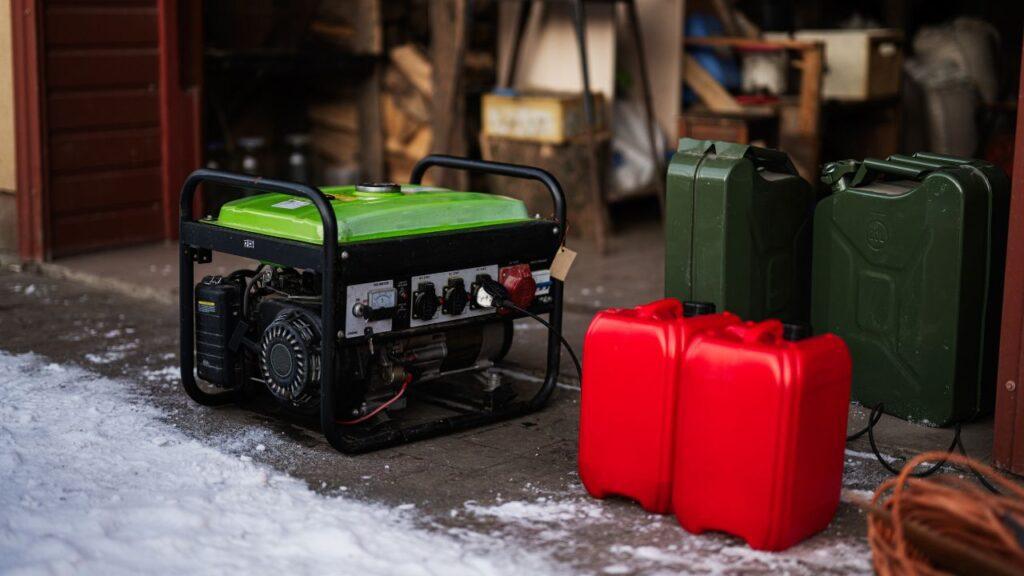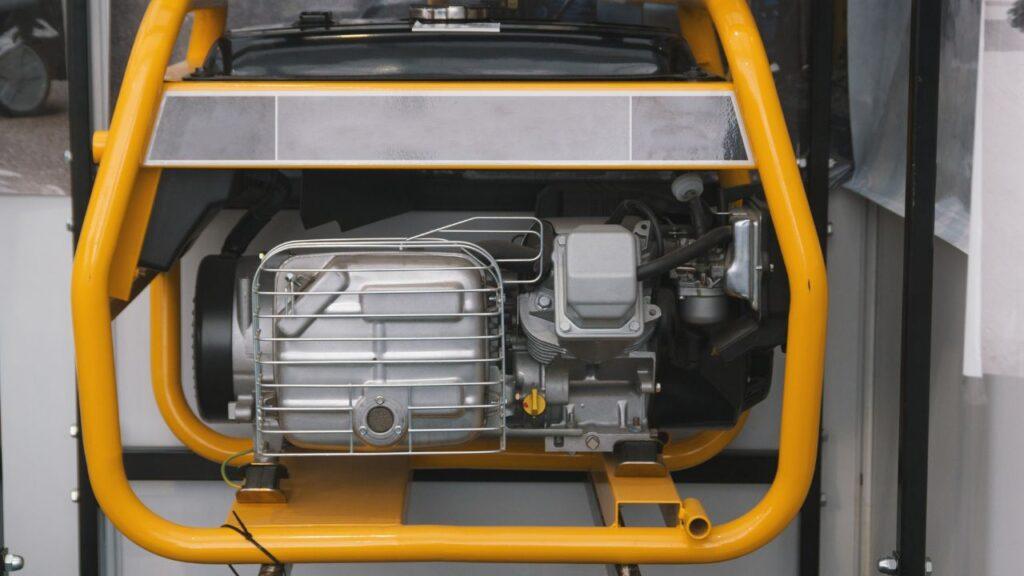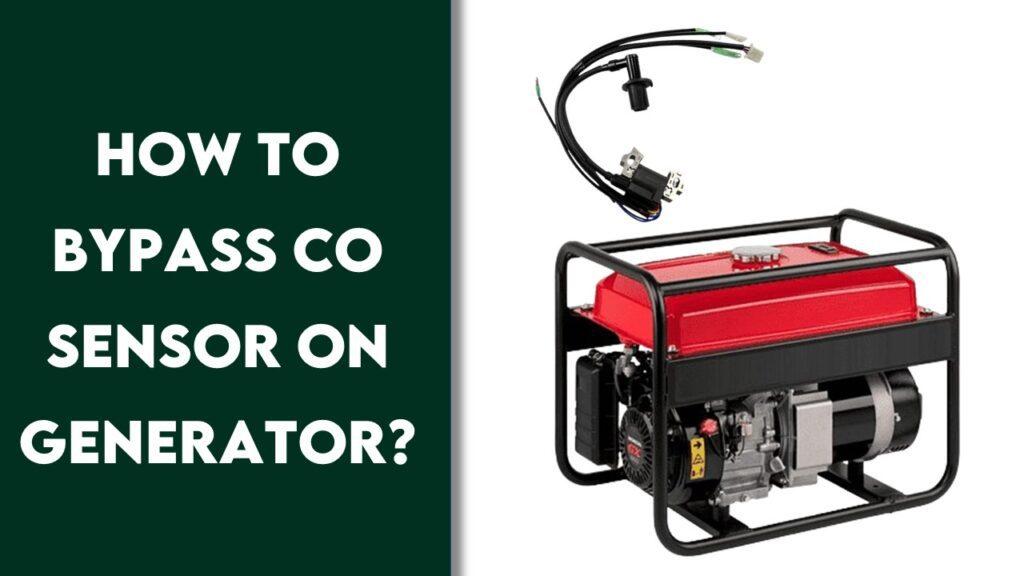
Keeping your generator’s fuel safely stored isn’t just about following rules—it’s about making sure you’re ready for anything, from a sudden power outage to a planned outdoor event. Different fuels like gasoline, diesel, and propane each come with their own set of storage do’s and don’ts to keep things safe and efficient. In this article, we are going to walk you through the safe fuel storage practices for generators. From picking the right containers to choosing the best spot for storage and keeping everything in check with regular maintenance, we’ll make sure you’ve got all the information you need. Follow along to ensure your generator is always ready to go, safely and efficiently.
Knowing Fuel Types and Their Storage Needs
When it comes to storing fuel for your generator, it’s crucial to understand that each type of fuel—gasoline, diesel, and propane—has its own specific needs and safety measures. Moreover, knowing these can make a big difference in maintaining your generator’s efficiency and ensuring safety.
Gasoline
- Volatility and Storage: Gasoline’s high volatility means it can evaporate and form combustible mixtures in the air quickly. It should be stored in a cool, well-ventilated area away from living spaces and direct sunlight. The right storage conditions are key to preventing accidents.
- Ideal Storage Containers: Containers for gasoline should be specifically designed for fuel storage—usually made of steel with flame arrestors and tight-sealing caps to prevent vapor leaks.
- Shelf Life and Maintenance: Under typical storage conditions, gasoline has a shelf life of three to six months; however, adding fuel stabilizers can extend this up to a year by preventing oxidation and evaporation.
Diesel
- Lower Flammability: Diesel isn’t as flammable as gasoline but it’s more susceptible to contamination by water and microbial growth, which can degrade the fuel.
- Contamination Prevention: Store diesel in a clean, dry, dark place. Use containers that are tightly sealed to keep out moisture and particulates. Regularly check for water and remove any condensation that accumulates.
- Shelf Life Enhancements: To extend diesel’s shelf life, use stabilizers and biocides that prevent bacteria and fungus from growing in the fuel. Properly treated, diesel can be stored for 12 to 24 months without significant quality loss.
Propane
- Storage Requirements: Propane requires robust, pressure-resistant tanks for safe storage. These tanks must comply with specific safety regulations to handle the pressurized liquid.
- Regular Inspections: It’s vital to regularly inspect propane tanks for any signs of wear, corrosion, or leaks. Engage a professional for these inspections to ensure they are thorough.
- Advantage of Longevity: One of the biggest advantages of propane is its indefinite shelf life, which makes it ideal for long-term storage if the tanks are maintained properly and kept in safe conditions.
Each fuel type requires thoughtful handling and adherence to safety practices to ensure your generator is ready for action whenever you need it. Proper storage not only extends the life of the fuel but also protects you and your property.
Selecting the Right Storage Containers
Selecting the appropriate storage containers for your generator’s fuel is crucial for maintaining safety and efficiency. The right containers minimize risks, preserve fuel quality, and facilitate ease of use. In this section, we will explore the features that make a container ideal for storing different types of fuel.
Approved Containers
Selecting containers that meet approved standards is vital for safe fuel storage. These containers are designed to handle the specific needs of various fuels, ensuring both safety and compliance with legal requirements.
- Material and Construction: Choose containers made from materials like high-density polyethylene (HDPE) or metal, which are resistant to corrosion and can withstand the harsh chemical properties of fuels.
- Safety Standards: It’s important to use containers that meet the safety standards set by recognized organizations like the Underwriters Laboratories (UL). These standards ensure the containers can safely contain fuel without leaking.
- Features for Safety: Opt for containers with safety features such as flame arrestors and automatic shut-off valves. These features help prevent accidents by controlling spills and reducing fire risks.
Using approved containers is not just about compliance; it’s about ensuring the safety of your environment and maintaining the quality of your fuel.
Capacity Considerations
Properly assessing your fuel storage needs is essential for effective generator operation.
- Sizing Your Needs: Calculate your fuel requirements based on the consumption rate of your generator and the expected duration of use. This will guide you in selecting containers with suitable capacities.
- Multiple Smaller Containers: Using multiple smaller containers instead of a single large one can enhance safety and manageability. This approach reduces the risk of fuel contamination and makes handling easier.
Choosing the right capacity for your containers is crucial not only for meeting your operational needs but also for ensuring safe and convenient storage.
Safety Features
Incorporating advanced safety features into your fuel storage containers can significantly reduce the risk of accidents.
- Ventilation: Containers should be equipped with ventilation systems to prevent the build-up of pressure from gas fumes, which can be hazardous.
- Spill-proof Design: Look for containers with spill-proof and overflow protection features to avoid accidents during refilling.
- Labeling and Color Coding: Properly label each container with the type of fuel it holds and use color coding to prevent mix-ups. This practice enhances both safety and operational efficiency.
Investing in containers with the right safety features not only secures your fuel supply but also ensures a safer storage environment.
Selecting the right storage containers is about more than compliance—it’s about actively ensuring that your fuel storage practices are as safe and effective as possible. By choosing the right containers, you safeguard your fuel and enhance the overall safety of your setup.
Best Practices for Fuel Storage Location
Choosing the right location for storing your generator fuel is as crucial as selecting the appropriate containers. The right spot ensures safety, preserves fuel integrity, and complies with local regulations. Here, we’ll explore the best practices for selecting a storage location that meets all safety and regulatory requirements.
Location Criteria
Finding the ideal location for your fuel storage involves several key considerations to ensure safety and compliance.
- Cool and Well-Ventilated: Choose a cool, well-ventilated area for fuel storage to prevent overheating and reduce the risk of vapor accumulation. Good ventilation helps disperse any hazardous fumes safely.
- Away from Living Areas: It’s important to store fuel away from living quarters and areas with frequent human activity to minimize the risk of accidents and ensure public safety.
- Protected from Elements: Ensure that the storage area is protected from direct sunlight, moisture, and extreme temperatures, all of which can degrade fuel quality and increase safety risks.
Selecting a proper storage location is a critical component of fuel safety, ensuring that both the fuel and the surrounding environment are protected.
Legal and Safety Compliance
Complying with local laws and safety regulations is crucial when determining where to store your fuel.
- Fire Codes and Regulations: Understand and adhere to local fire codes and environmental regulations. This often includes maintaining a specified distance from buildings and securing the appropriate permits.
- Secure Area: The storage site should be secure to prevent unauthorized access, which could include installing locks and possibly even surveillance systems to discourage theft or tampering.
Following these legal and safety guidelines not only helps avoid potential legal issues but also significantly enhances the safety of your fuel storage setup.
Protection from Elements
Effectively shielding your fuel from environmental factors is essential to maintain its quality and ensure it remains safe to use.
- Temperature Control: Store fuel in a location where temperature fluctuations are minimal to maintain stability and prevent safety hazards.
- Moisture Control: Choose an area that is free from dampness and not prone to flooding. Moisture can contaminate fuel, leading to degradation and increasing the risk of accidents.
- Direct Sunlight: Avoid storing fuel in direct sunlight, as excessive heat can increase pressure inside containers, posing additional safety risks.
Proper environmental protection for your fuel storage not only extends the life of the fuel but also ensures that it is safe for use when needed.
Selecting the optimal location for your fuel storage is a foundational safety practice that enhances the overall effectiveness and reliability of your generator system.
Maintenance of Fuel and Storage Areas
Proper maintenance of your fuel and its storage areas is key to ensuring the safety and efficiency of your generator system. By conducting regular checks and keeping the area well-maintained, you can prevent contamination, degradation, and potentially hazardous situations.
Regular Checks
Regular inspections are vital to maintain the integrity of your fuel storage setup and to address any issues promptly before they escalate.
- Inspect for Leaks: Make it a routine to visually inspect containers and the storage area for any signs of leaks or spills. Early detection can prevent environmental damage and reduce fire hazards.
- Monitor for Corrosion: For metal containers, regularly check for signs of rust and corrosion. Corrosion can weaken containers, making them susceptible to leaks, so it’s important to address any signs of deterioration immediately.
- Check Seals and Caps: Examine the seals and caps on containers to ensure they are secure and intact. Properly fitted seals prevent the escape of vapors and protect the fuel from external contaminants like dust and water.
Consistent monitoring and maintenance of your fuel storage area help in maintaining the safety and operational readiness of your generator.
Fuel Rotation
Managing your fuel supply effectively includes rotating your stock to ensure the fuel remains fresh and effective for use.
- Usage Schedule: Implement a usage schedule that prioritizes older fuel stocks to avoid issues like sediment buildup and fuel degradation, which can occur over time.
- Refresh Stock: Regularly refreshing your fuel supply ensures that your generator is always running on high-quality fuel. For example, gasoline can degrade over time, so consider replacing it every three to six months.
- Additives: Using fuel stabilizers can be particularly beneficial for fuels prone to rapid degradation, such as gasoline. Stabilizers can extend the shelf life of fuel, thereby reducing the frequency of rotation and maintaining fuel efficacy.
A strategic fuel rotation plan not only extends the life of the fuel but also enhances the reliability of your generator during critical times.
Cleanliness and Organization
Maintaining a clean and orderly fuel storage area is crucial for operational efficiency and safety.
- Remove Clutter: Regular cleaning sessions to remove clutter and potentially flammable materials from the storage area are essential. This reduces the risk of fire and keeps the area safe for handling fuel.
- Organized Layout: Keep fuel containers in a well-organized manner to facilitate easy access and efficient inventory management. This helps in tracking which fuel is oldest and should be used first.
- Spill Kits: Equip the storage area with adequate spill containment and cleanup kits. Immediate access to these tools in the event of a spill can mitigate environmental impact and facilitate quick remediation.
A clean and organized fuel storage environment not only prevents accidents but also streamlines the management of your fuel supplies.
Effective maintenance of fuel and storage areas is fundamental to ensuring the long-term functionality and safety of your generator. Regular inspections, strategic fuel rotation, and a clean storage environment are key practices that safeguard your equipment and provide peace of mind.
Handling and Safety Measures
Ensuring safe handling and implementing robust safety measures are critical components of managing generator fuel. These practices protect not only the fuel itself but also the people who interact with it and the environment.
Safe Handling Practices
Proper techniques for handling fuel can significantly reduce the risk of accidents and enhance operational safety.
- Transporting Containers: Always use appropriate equipment and procedures when moving fuel containers. Ensure containers are securely closed and lifted using tools designed for their weight and size to prevent spills.
- Fuel Transfer: Use dedicated pumps or funnels designed for fuel transfer to minimize spillage. Ensure any transfer is done on a stable surface and away from ignition sources.
- Regular Training: Anyone involved in handling fuel should receive regular training on the proper procedures and safety measures. This includes updates on any new regulations or equipment.
Adopting safe handling practices is not just about following guidelines; it’s about creating a culture of safety that pervades all aspects of fuel management.
Spill Management
Effective management of spills is essential to prevent environmental damage and ensure quick containment and cleanup.
- Immediate Response: Equip the storage area with spill kits that include absorbents, neutralizers, and containment tools. Familiarize yourself and any personnel with the location of these kits and the procedures for their use.
- Spill Containment Plans: Develop and implement a spill containment plan. This plan should include immediate actions to take in the event of a spill, such as notifying the appropriate authorities and starting containment and cleanup.
- Regular Drills: Conduct regular drills to ensure that everyone knows their role in a spill situation and can act quickly and effectively.
Proper planning and training prepare you to handle spills efficiently and safely. By conducting regular drills and staying updated on the best practices, you can minimize the impact of spills. This proactive approach ensures you respond quickly and effectively, protecting both your team and the environment.
Personal Protective Equipment (PPE)
Using the right personal protective equipment is vital for anyone handling or coming into contact with fuel.
- Appropriate PPE: Ensure that all personnel wear suitable PPE, which may include gloves, goggles, and fire-resistant clothing, depending on the fuel type and the handling procedures.
- Maintenance of PPE: Regularly inspect and maintain PPE to ensure it is in good condition and replace any items that no longer meet safety standards.
- Training on PPE Use: Provide training on the correct use of PPE, including how to put it on, take it off, and understand its limitations.
Using appropriate PPE not only protects individuals but also contributes to a safer overall working environment.
Morover, focusing on safe handling and robust safety measures is essential for maintaining a secure fuel storage and handling system. This not only prevents accidents but also ensures compliance with health and safety regulations.
Advanced Tips: Extending Fuel Lifespan
Proper storage and handling are crucial, but there are additional measures you can take to extend the lifespan of your stored fuel, ensuring it remains effective and safe to use over time.
Stabilizers and Additives
Using stabilizers and additives can significantly enhance the shelf life and performance of your fuel.
- Purpose of Stabilizers: Fuel stabilizers prevent oxidation and the formation of deposits, which are common in fuels like gasoline when stored for extended periods.
- Choosing the Right Additives: Select additives that are suitable for the type of fuel you are storing. For example, diesel additives can help prevent the growth of microbes that thrive in the water-fuel interface.
- Application Procedures: Follow the manufacturer’s instructions for adding stabilizers and additives to ensure effectiveness. Typically, these should be added when the fuel is fresh and then mixed thoroughly by shaking or stirring.
Incorporating stabilizers and additives into your fuel storage routine can significantly extend its usability and prevent common issues like phase separation in ethanol-blended fuels.
Optimal Storage Conditions
Maintaining optimal conditions for fuel storage is key to preserving its quality and extending its shelf life.
- Temperature Regulation: Store fuel in a location where the temperature remains stable. Extreme cold can cause diesel to gel, while excessive heat can increase the rate of fuel degradation.
- Humidity Control: Keep the storage area dry to avoid introducing moisture into the fuel, which can lead to contamination and accelerated degradation.
- Proper Container Sealing: Ensure that all fuel containers are sealed correctly to prevent air and moisture from entering, which can lead to oxidation and contamination.
By controlling the storage environment, you can significantly extend the life of your fuel and ensure it remains ready for use when needed.
Regular Fuel Testing
By regular testing of your stored fuel can provide insights into its condition and any potential issues that need addressing.
- Testing Frequency: Conduct regular tests on your stored fuel to assess its quality and suitability for use. This is especially important for fuels stored for more than six months.
- What to Test For: Check for signs of contamination, water accumulation, and the efficacy of any added stabilizers or additives.
- Professional Assessment: Consider hiring a professional service to test fuel quality if you are storing large quantities or if the fuel is critical for your operations.
Regular testing allows you to manage your fuel effectively, ensuring it remains in good condition and providing peace of mind that your generator for emergency home backup will perform reliably in emergency situations.
Focusing on these advanced practices can greatly enhance the lifespan and reliability of your stored fuel. By implementing stabilizers, maintaining optimal storage conditions, and conducting regular fuel testing, you can ensure that your generator fuel is always ready for action.
Emerging Technologies and Innovations in Fuel Storage
As we push further into the 21st century, the way we store fuel is getting smarter, safer, and kinder to our planet. This section dives into some of the most exciting technological breakthroughs and innovative approaches reshaping fuel storage. From materials that halt corrosion in its tracks to systems that keep a vigilant eye on fuel conditions, these advances are setting new standards for safety and efficiency.
Advanced Materials for Storage Containers
It’s an exciting time in the world of fuel storage materials. Innovations here are all about tackling old problems like leaks and environmental damage in new ways.
- High-tech Polymers: These aren’t your everyday plastics. Developed with cutting-edge science, these polymers are lighter than metals and won’t react with the fuel they hold, which cuts down on contamination risks.
- Nano-coatings: Imagine a thin, almost invisible coating that protects metal tanks from rust and leaks and can even slow down a fire. That’s what modern nano-coatings can do.
These materials are game changers, making fuel storage not only safer but also more cost-effective over time by extending the lifespan of containers.
Smart Fuel Storage Systems
Today’s smart fuel storage systems do more than just store fuel; they actively manage it, keeping it in optimal condition with little human intervention.
- Integrated Sensors: These sensors keep tabs on everything from temperature to volume, helping prevent safety hazards before they can start.
- Automated Control Systems: With these systems in place, the environment around stored fuel can be automatically adjusted to protect against external changes or potential threats.
This technology is like having a 24/7 guard over your fuel supply, ensuring everything is stored just right and ready when you need it.
Environmental and Safety Innovations
The latest safety and environmental innovations are making fuel storage friendlier for our planet while keeping it robust against accidents.
- Biodegradable Additives: These special additives stabilize the fuel but break down harmlessly if they end up in the environment—a win-win for safety and nature.
- Enhanced Containment Measures: New containment technologies can react in seconds to a spill, expanding to contain it or neutralizing the fuel to prevent damage.
These approaches help ensure that if something goes wrong, the impact on the environment is minimal, helping companies meet stricter regulations and preserve their surroundings.
Regulatory Compliance Technology
Staying compliant with the law is easier than ever thanks to new tech tools designed to keep fuel storage up to code.
- Compliance Software: This software keeps track of all your compliance data, making sure you meet every safety standard and helping you avoid hefty fines.
- Leak Detection Technology: Early detection is key to preventing big problems. Today’s leak detection tech is so sensitive, it can spot the smallest issues before they turn into major leaks.
These technologies not only keep fuel storage facilities safe but also streamline operations, making compliance a seamless part of the daily routine.
With these advanced technologies at our disposal, managing fuel storage has never been more efficient or safer. Each innovation not only raises the bar for what’s possible in fuel storage but also ensures we’re ready for the future, whatever it may bring.
Wrapping It Up!
Implementing robust fuel storage practices is essential for ensuring the safety and efficiency of your generator. Moreover, by selecting appropriate storage containers, maintaining an optimal storage environment, and handling fuels safely, you can significantly extend the life of your stored fuel and enhance generator reliability.
Furthermore, regularly checking storage conditions, rotating fuel supplies, and using stabilizers can prevent contamination and degradation. Moreover, staying informed about the latest storage technologies and safety protocols will help you maintain a system that is not only compliant with current regulations but also prepared for any emergency. Adopting these practices ensures that your generator is ready and effective, providing peace of mind and operational readiness when you need it most.
Related FAQs
How to Make Fuel Storage More Eco-Friendly?
Innovative biodegradable additives and eco-conscious materials are used to reduce environmental impact.
What Are The Lifespan Expectations For Modern Fuel Containers?
High-tech polymers and nano-coated metals extend the lifespan of containers significantly beyond traditional materials.
Is It Cost-Effective To Implement Smart Fuel Storage Systems?
Yes, smart systems reduce waste and improve efficiency, offering long-term savings despite initial investment costs.
How Often Should You Inspect Fuel Storage Containers?
Regular inspections should be conducted at least annually, with more frequent checks for signs of wear or damage.
Can You Upgrade Old Fuel Storage Systems to Smart Systems?
Many existing systems can be retrofitted with smart sensors and automated controls to enhance functionality and safety.
At our core, we’re a group of passionate generator, inverter, solar energy, battery enthusiasts. We dive deep into the world of tech, especially when it’s about powering your home, RV or outdoors. We try to provide as much value to the readers with our information and how to blog articles as possible. For affiliate articles our honest and transparent reviews of essential tech products are rooted in real-world experience. We take great satisfaction in offering unbiased evaluations, ensuring that you can make informed decisions when investing in your desired techs.




